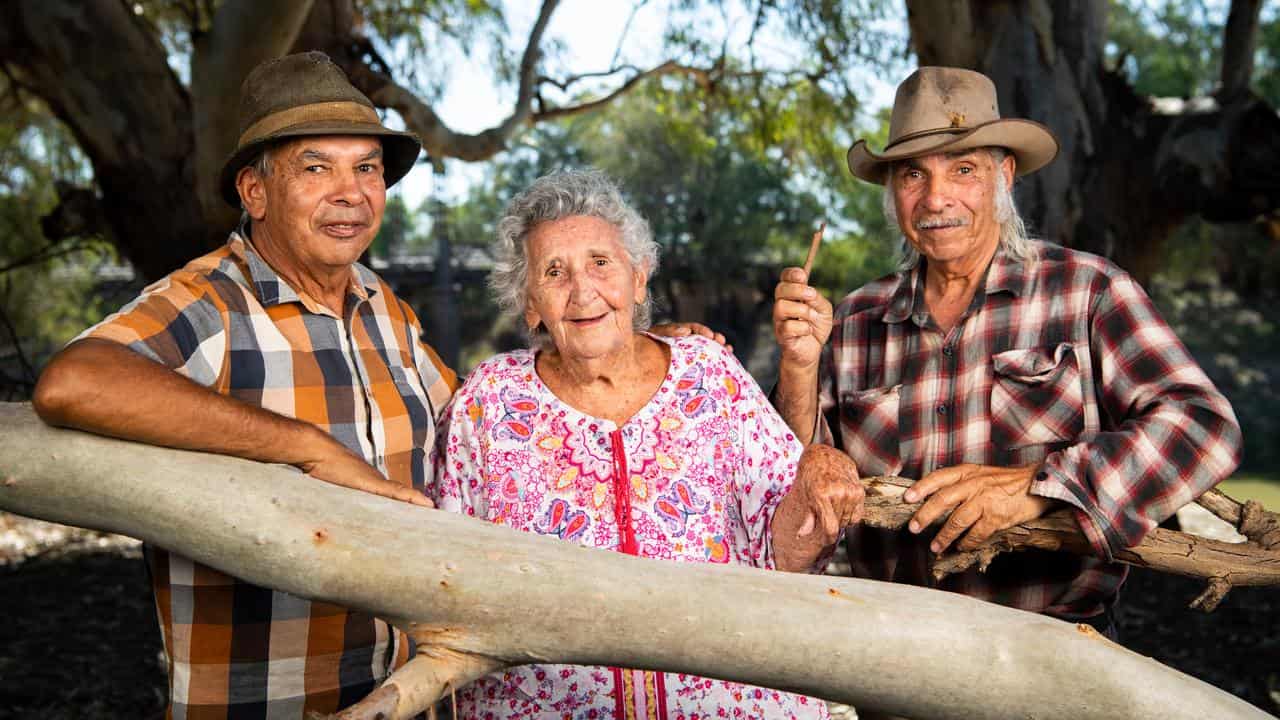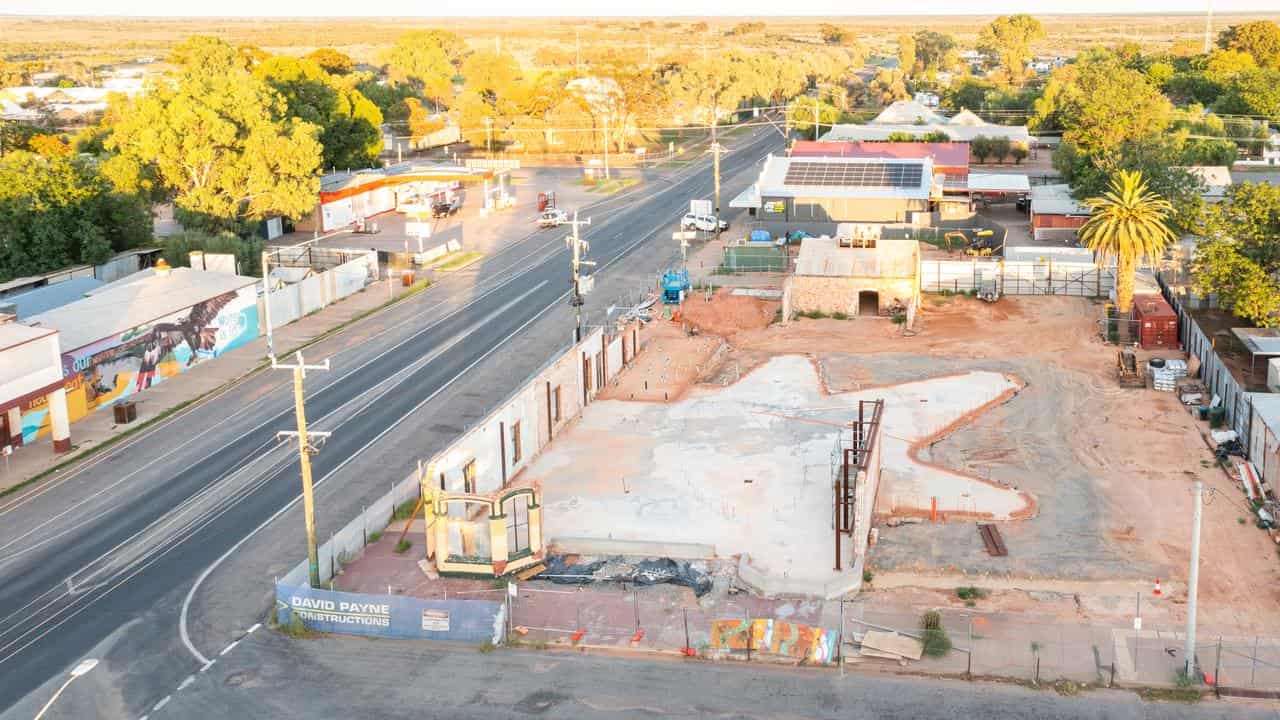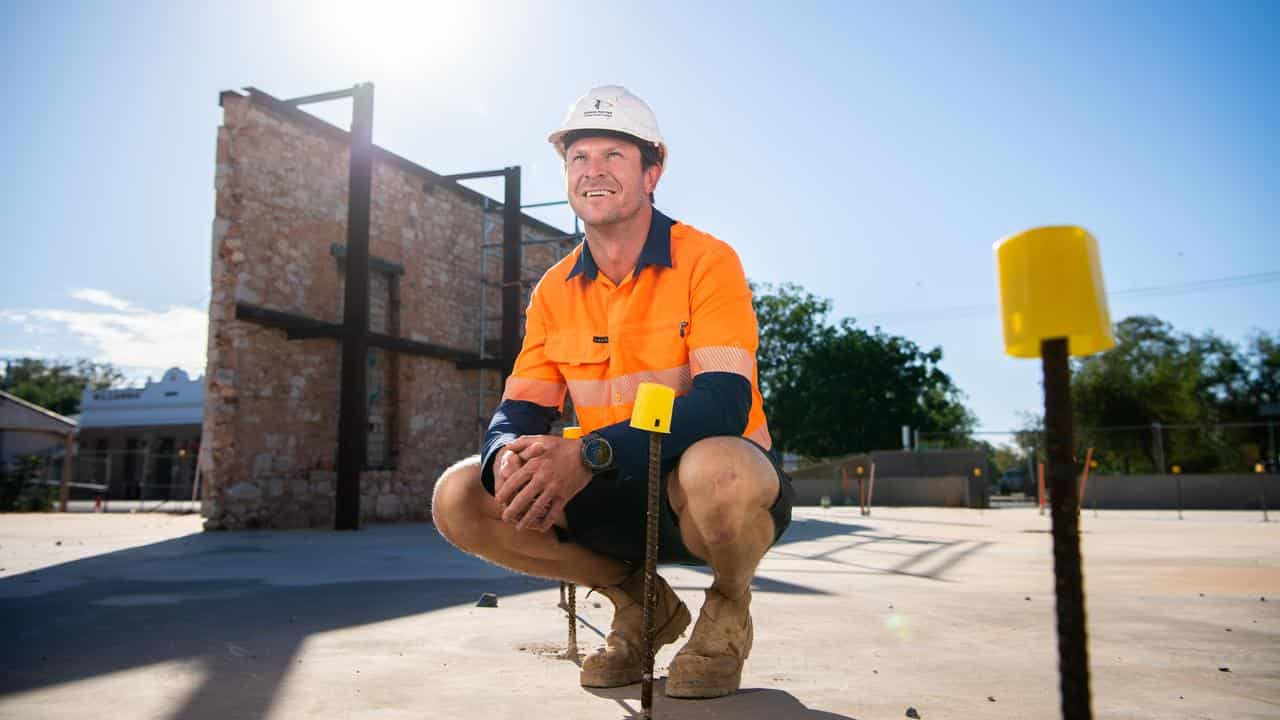An emu footprint giving hope to a town doing it tough

The tiny town of Wilcannia in north western NSW is easy to miss - within seconds, a passing vehicle is in one end and out the other.
But visitors who make a turn at the post office and meander down a trail end up under the shade of elder gums by the Darling-Baaka River, the Baakandji people's "mother".
It's here that they realise the beauty of the place.
But now a group of locals and out-of-towners is determined to bring that sense of beauty and culture to the forefront of Wilcannia with the finally under construction Baaka Cultural Centre.
More than just a building, the centre is about new life for a place where visitors were once hesitant to open their doors.
It's about becoming a "to town" rather than a "through town".

Opposite the centre site where its emu footprint-shaped slab was poured in December, local elders Aunty Shirley Evans, Uncle Eddy Harris and Uncle Waddy Harris reminisce about when the general store Knox and Downs - which sold everything from trousers to flour - stood in its place.
In 2002, the historic and then-closed building burned down, leaving a hole in the heart of the community while word spread about Wilcannia's social issues, earning it notoriety.
In 2024, the Baaka centre's construction site manager Ben Evans says the town has changed significantly.
"Its reputation is unfair now, 100 per cent," he tells AAP.
As Wilcannia pushes to reinvent itself, the centre - which will serve as the first dedicated repository for Baakandji artefacts, a workspace for artists, a gallery and a language learning hub - represents a beacon of hope.
It will include some remnants of the general store and is slated to open by early 2025.
Aunty Shirley recalls when the community would come together at Knox and Downs and says Wilcannia craves a new meeting place.

"What you need is something for the young ones to come to so there's something happening for them, not just us old ones sitting there yacking," she says.
Uncle Eddy - an artist who worked at Knox and Downs as a young man - pulls bowls and clapsticks carved from the limbs of mulga, mallee and gum trees from paper shopping bags.
He spreads them out on a park bench and envisions a space where he can showcase them.
"We've been rallying to get it for a long time," he says of the centre.
"This is untouched tourism town ... we need (the centre) to be sustainable."
Acting chief executive of the Aboriginal corporation behind the project, Hawkesbury-based Grant Leslie, says the centre is essential to Wilcannia's future.
Locals were skeptical about the viability of the project given many before it have quickly come and gone.

Costs for the commonwealth and state government-funded Baaka centre blew out to $9.5 million since its repurposing was pitched a decade ago.
But Mr Leslie hopes the centre will boost the local economy, encouraging other businesses to set up and stay in town.
"Being river people, the Darling-Baaka River is (the Baakandji people's) lifeblood," he says.
"This is where they get all of their spiritual culture from and it's important to be able to tell that story."
Skepticism has been replaced by careful confidence from Aunty Shirley and uncles Eddy and Waddy, who share stories with a sense of familiarity earned only by always calling the same place home.
A welcome breeze rustles gum leaves as birds dive and fetch fish from the river, which shimmers as it quietly flows.
"We need to keep this place alive," Uncle Waddy says.
This AAP article was made possible with the support of the Meta Australian News Fund and The Walkley Foundation.